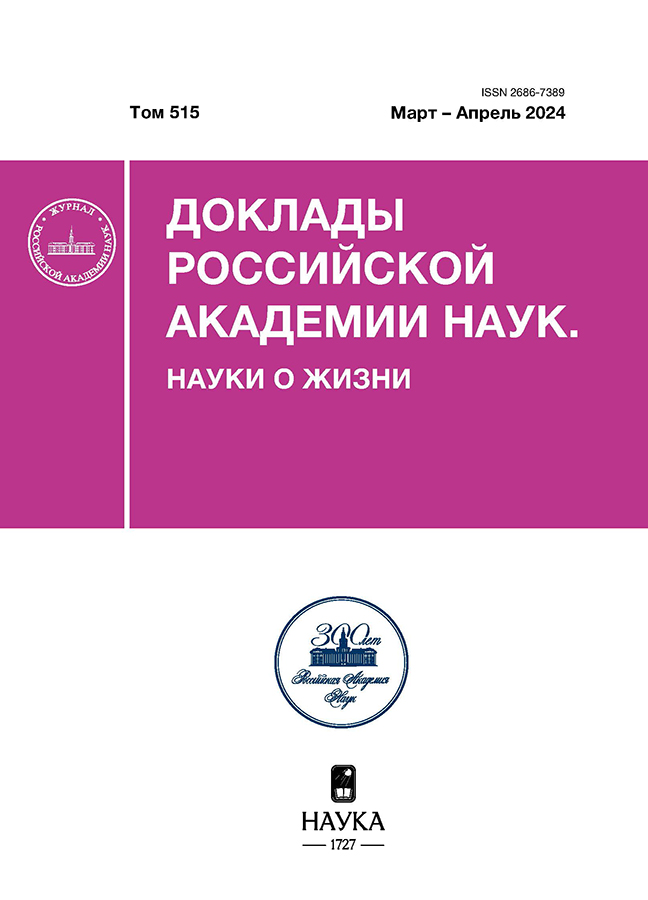Quantitative description of the N-protein of the SARS-CoV-2 virus degradation in cells stably expressing it under the influence of new modular nanotransporters
- 作者: Khramtsov Y.V.1, Ulasova A.V.1, Lupanova T.N.1, Georgiev G.P.1, Sobolev A.S.1,2
-
隶属关系:
- Institute of Gene Biology, RAS
- Lomonosov Moscow State University
- 期: 卷 515, 编号 1 (2024)
- 页面: 25-28
- 栏目: Articles
- URL: https://ter-arkhiv.ru/2686-7389/article/view/651438
- DOI: https://doi.org/10.31857/S2686738924020053
- EDN: https://elibrary.ru/WFRQEA
- ID: 651438
如何引用文章
详细
Two eukaryotic cell lines, A549 and A431, were obtained with stable expression of the nucleocapsid protein (N-protein) of the SARS-CoV-2 virus fused with the red fluorescent protein mRuby3. Using microscopy, the volumes of the cytoplasm and nucleus were determined for these cells. Using quantitative immunoblotting techniques, the concentrations of the N-mRuby3 fusion protein in their cytoplasm were assessed. They were 19 and 9 μM for A549 and A431 cells, respectively. Using these concentrations, the initial rate of N-protein degradation in the studied cells was estimated from the decrease in cell fluorescence. In A549 and A431 cells it turned out to be the same and equal to 84 nM per hour. The approach of quantitatively describing the degradation process can be applied to analyze the effectiveness of a wide class of antiviral drugs that cause degradation of viral proteins.
全文:
作者简介
Y. Khramtsov
Institute of Gene Biology, RAS
编辑信件的主要联系方式.
Email: alsobolev@yandex.ru
俄罗斯联邦, Moscow
A. Ulasova
Institute of Gene Biology, RAS
Email: alsobolev@yandex.ru
俄罗斯联邦, Moscow
T. Lupanova
Institute of Gene Biology, RAS
Email: alsobolev@yandex.ru
俄罗斯联邦, Moscow
G. Georgiev
Institute of Gene Biology, RAS
Email: alsobolev@yandex.ru
Academician
俄罗斯联邦, MoscowA. Sobolev
Institute of Gene Biology, RAS; Lomonosov Moscow State University
Email: alsobolev@yandex.ru
Corresponding Member
俄罗斯联邦, Moscow; Moscow参考
- Surjit M., Lal S.K. // Infect Genet Evol. 2008. V. 8. P. 397–405.
- Wu C., Zheng M. // Preprints. 2020. 2020020247.
- Prajapat M., Sarma P., Shekhar N., et al. // Indian J Pharmacol. 2020. V. 52. P. 56.
- Liao H.-I., Olson C.A., Hwang S., et al. // J Biol Chem. 2009. V. 284. P. 17512–17520.
- Shipunova V.O., Deyev S.M. // Acta Naturae. 2022. V. 14. № 1(52). P. 54–72.
- Du Y., Zhang T., Meng X., et al. // Preprints. 2020. doi: 10.21203/rs.3.rs-25828/v1.
- Khramtsov Y.V., Ulasov A.V., Lupanova T.N., et al. // Dokl. Biochem. Biophys. 2023. V. 510. P. 87–90.
- Lu M., Liu T., Jiao Q., et al. // Eur J Med Chem. 2018. V. 146. P. 251–259.
- Fulcher L.J., Hutchinson L.D., Macartney T.J. et al. // Open biology. 2017. V. 7. 170066.
- Slastnikova T.A., Rosenkranz A.A., Khramtsov Y. V., et al. // Drug Des Devel Ther. 2017. V. 11. P. 1315–1334.
- Khramtsov Y.V., Ulasov A.V., Rosenkranz A.A., et al. // Pharmaceutics. 2023. V. 15, 324.
- Klionsky D.J., Abdel-Aziz A.K., Abdelfatah S., et al. // Autophagy. 2021. V. 17. № 1. P. 1–382.
补充文件











